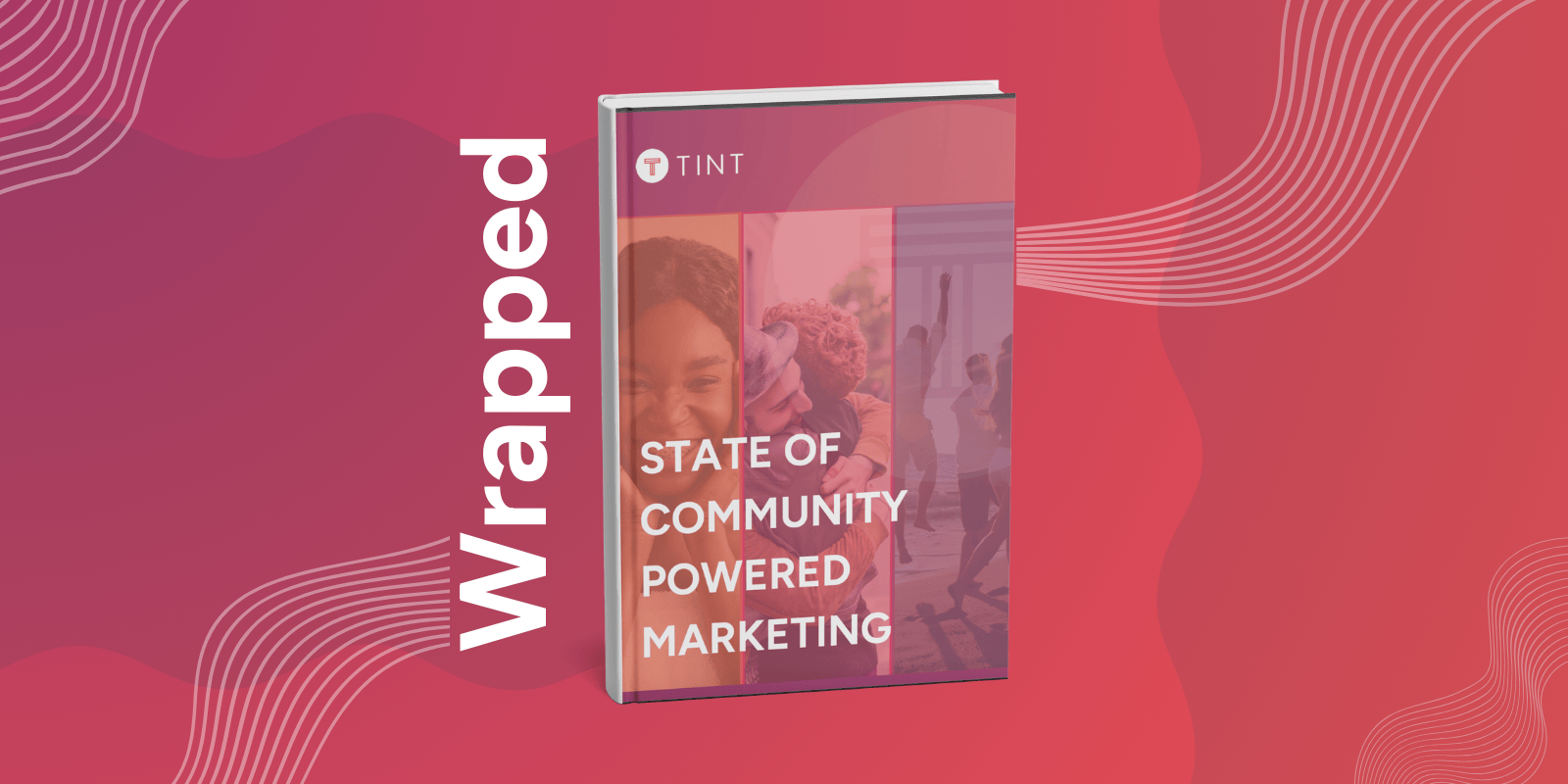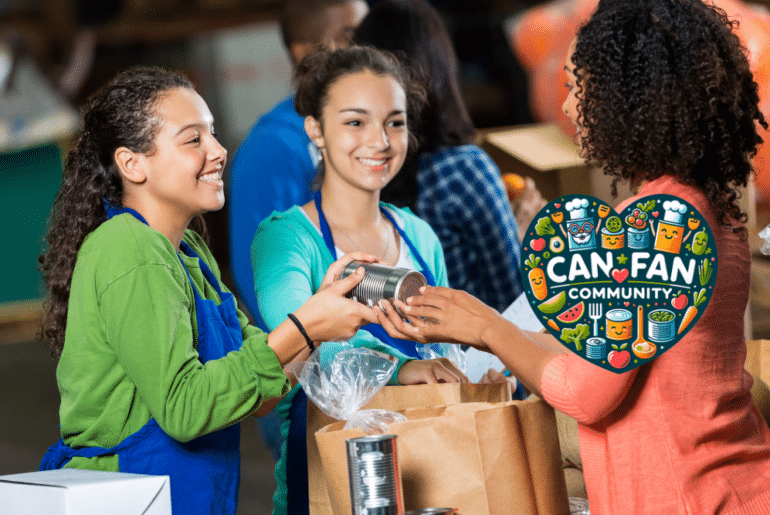Welcome to our year-end Community Powered Marketing Recap 2024. This year was defined by transformational shifts in how brands connect with consumers. At the heart of these changes lies Community Powered Marketing, a strategy that has moved beyond buzzword status to become a foundational approach for forward-thinking businesses.
With a decline in traditional social media usage and the rise of dedicated online brand communities, 2024 provided a wealth of insights on building authentic, lasting connections with your audience. We’re reviewing our thoughts and predictions from the start of the year. Let’s dig in.
In Case You Missed It: Read our 2024 State of Community Powered Marketing here.
Traditional Social Media Is Losing Its Shine
Oxford University Press has named brain rot the word of the year. The days of endlessly scrolling major social media platforms are fading. A GWI study shows that global social media usage has declined since 2022. Add to this Gartner’s prediction that by 2025, 50% of consumers will significantly reduce their use of traditional platforms due to quality concerns, and it becomes clear that brands can no longer rely solely on these channels to engage their audience.
Add the looming deadline for TikTok’s forced sale in the United States, and you’ve got a perfect storm of unenthused users.
What’s replacing the Instagram selfies and TikTok dances? Private, interest-based communities where consumers can interact more meaningfully—with each other and brands.
Fun Fact: Brain Rot isn’t a new term. The first recorded use of the term was in Henry David Thoreau’s pivotal book Walden. He writes, “While England endeavors to cure the potato rot, will not any endeavor to cure the brain-rot, which prevails so much more widely and fatally?”
The Rise of Private Online Communities
Consumers are flocking to spaces where their voices are heard (and listened to). Research from Community Roundtable revealed that 78% of consumers prefer connecting with brands through dedicated online communities rather than engaging via traditional social media.
Why are these communities so valuable? They offer richer interactions, allowing members to engage in meaningful discussions beyond shallow exchanges. This sense of belonging can’t be replicated on social media feeds. In these communities, members can share their stories, network with like-minded individuals, and receive support, all of which contribute to a stronger community bond… and a stronger connection to the brand that facilitates this network.
This shift towards community-focused platforms gives brands an opportunity to rebuild customer trust. These communities empower brands to showcase their commitment to their customers, unlike the pay-to-play social platforms of old, where authentic connection often feels diluted by advertising and algorithms.
Connection Wins Over Followers
Community engagement isn’t just a warm-and-fuzzy exercise in public relations. It delivers tangible benefits for brands. Edelman’s survey found that 67% of consumers feel more connected to brands that foster community engagement than those that rely on social media campaigns.
A connected customer is a loyal customer, and guess what? They’re also likely to buy. HubSpot’s research showed that 77% of consumers are willing to make purchases directly from an online brand community. Authenticity and connection are driving real ROI.
The End of Influencer Dominance
Sorry to the influencers reading this, but this wasn’t your year. Influencer Marketing Hub’s benchmark report finds that 71% of marketers say traditional influencer campaigns are becoming less effective. Today’s consumers are prioritizing authenticity above all else, which means your local micro-influencer might have a better shot at delivering trust than a big-name celebrity with sponsored posts galore.
That’s not to say influencer marketing is totally dead. It’s just evolving, smaller followings, greater community endorsement, and trust-building over time are where it’s headed.
Navigating AI’s Growing Impact
Generative AI made waves this year and it wasn’t always smooth sailing. Gartner predicts that by 2026, 60% of Chief Marketing Officers will adopt safeguards to combat the risks of deceptive or low-quality AI output.
For brands, getting ahead means harnessing AI responsibly. Pair AI tools with human oversight for activities like customer support, content personalization, and data analysis. And stay transparent. Consumers value brands that disclose how they’re using tech to enhance—not replace—authentic interactions.
The Power of Listening
Want to inspire customer loyalty? Start by listening. The Edelman Trust Barometer revealed that 97% of consumers feel motivated to stay loyal and purchase more often from brands that actively listen to their feedback.
Creating space for this two-way dialogue through review systems, forums, or community Q&As solidifies trust and boosts brand affinity. These engaged customers are more likely to become your brand’s advocates.
Community-Driven Content Multiplies Your Reach
User-generated content (UGC) doesn’t just drive engagement—it drives action. Here’s the proof:
- A BrightLocal report shows that 90% of consumers are more inclined to leave reviews when they feel part of a community.
- According to Hootsuite, 68% of community members create content about the brands they engage with.
This type of content also works harder for your brand. Re-shared customer reviews and testimonials don’t just feel more authentic; they are more authentic. That authenticity builds trust, echoed in increased shares, clicks, and purchases.
Co-Creation Beats Traditional Marketing
One of the strongest trends in 2024 was brands collaborating with their consumers. A study in Marketing Week highlighted co-creation as a powerful alternative to traditional campaigns. Brands that involve their communities in decision-making—whether brainstorming product ideas or creating ad campaigns, cultivate a sense of ownership and loyalty among their consumers.
Barriers to Emotional Connections
Despite the importance of emotional resonance, brands face growing challenges in this area. A McKinsey study revealed that economic pressure has led many consumers to prioritize price over loyalty. This doesn’t mean emotional engagement is obsolete; it just means it needs to evolve alongside changing consumer realities.
Brands must pair emotional connections with practical value. Offer clarity and reassurance about how your product provides the best bang for their buck and aligns with their values.
Preview of the State of Community Powered Marketing 2025
Here’s what needs to stay top of mind as you plan for next year:
- Engagement First: Invest in private, interest-based communities for deeper customer ties.
- Authenticity Over Hype: Prioritize real connections, user-generated content, and meaningful advocacy.
- Balance AI and Human Interaction: Use AI to streamline processes, but don’t lose the personal touch.
- Be Transparent and Inclusive: Build trust by listening to your community and co-creating wherever possible.
And that’s our Community Powered Marketing Recap 2024! Need help navigating the evolving marketing landscape? We’re here to help. Whether it’s building your first branded community or understanding the latest UGC trends, we’ve got the expertise to keep your strategy ahead of the curve. Chat with a TINT Community Specialist today.




